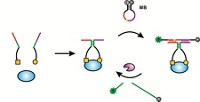Advertisement
Grab your lab coat. Let's get started
Welcome!
Welcome!
Create an account below to get 6 C&EN articles per month, receive newsletters and more - all free.
It seems this is your first time logging in online. Please enter the following information to continue.
As an ACS member you automatically get access to this site. All we need is few more details to create your reading experience.
Not you? Sign in with a different account.
Not you? Sign in with a different account.
ERROR 1
ERROR 1
ERROR 2
ERROR 2
ERROR 2
ERROR 2
ERROR 2
Password and Confirm password must match.
If you have an ACS member number, please enter it here so we can link this account to your membership. (optional)
ERROR 2
ACS values your privacy. By submitting your information, you are gaining access to C&EN and subscribing to our weekly newsletter. We use the information you provide to make your reading experience better, and we will never sell your data to third party members.
Analytical Chemistry
Quick cocaine detection
March 6, 2006
| A version of this story appeared in
Volume 84, Issue 10
A new electronic, aptamerbased sensor that rapidly and cheaply detects cocaine illustrates the general power of such devices, say creators Kevin W. Plaxco, Alan J. Heeger, and colleagues at the University of California, Santa Barbara (J. Am. Chem. Soc. 2006, 128, 3138). The basic sensor consists of a nucleotide sequence designed by molecular evolution to bind to a specific target. The strand is tagged at one end by the redox indicator methylene blue (MB) and attached at the other end to a gold electrode. In the absence of a target-in this case, cocaine-the aptamer likely remains unfolded. If cocaine is present, the aptamer assembles into a three-armed structure with the cocaine molecule at the center. The MB tag either moves close to or binds with the electrode, thereby causing a change in voltage. The group ultimately found two nucleotide sequences that bind cocaine selectively in biofluid samples even in the presence of contaminants.






Join the conversation
Contact the reporter
Submit a Letter to the Editor for publication
Engage with us on Twitter